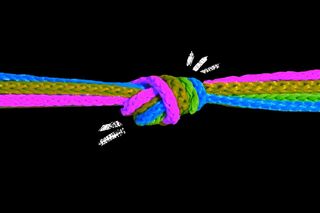
Why Interacting With People From Diverse Cultures Can Make Us More Empathetic
These findings strengthen arguments for greater diversity in classrooms and workplaces, and more diverse representation in media.

Friendships are potent in their ability to offer support and solidary. But they may also help nullify social biases by influencing how we empathize, and more importantly, who we empathize with. To put it simply: bias against people from different social identities can be changed, and even reversed.
“White students who had spent extended time in China showed stronger neural responses to pain expressions on Asian faces compared to white faces,” noted PsyPost. describing a new study that found how greater social exposure to people from diverse backgrounds can undo the social conditioning that may have played a part in making us biased against them.
Published in the journal Neuropsychologia, the study used brain imaging to establish its findings. The researchers looked at a small dataset of 35 white students from North America and eastern Europe who were studying in China. First, the researchers identified the neural networks in people’s brains that light up when they feel empathy. Then, they assessed the impact of people’s socio-cultural experiences on their ability to empathize with people from a different race, as compared to the one they belong to.
Students, who had spent just two to four weeks in China, on seeing images depicting pained expressions on the faces of both white and Asian people, reacted more strongly to the former — suggesting their in-group favoritism was still active. However, when students who had spent six to 36 weeks in China saw the same images, they were moved more by the pained expressions on the faces of Asian people — indicating that their in-group favoritism was no longer active.
In general, we know that people are more receptive to the emotions — and pain — of those who are like us, in comparison to say people from other racial, ethnic, and class backgrounds. “Racial ingroup favoritism in empathic brain activity has been widely observed and is associated with biased behavior toward same-race and other-race individuals,” explained first author Yuqing Zhou from the School of Psychological and Cognitive Sciences at Peking University in Beijing. Past research also attests to it — perhaps, our evolutionary underpinnings are to blame here.
Related on The Swaddle:
Training Young People To Be More Empathetic Could Reduce Violent Crimes
This favoritism is deleterious, for it feeds into systemic discrimination in a social order based on inequities. More so, in a globalized world, where with greater immigration and blending of cultures and races, this favoritism, of sorts, can result in discrimination even without one intending to be biased. An unconscious bias by a judge in a legal matter, for instance, against someone of a marginalized identity could impede justice. Similarly, a doctor’s bias, no matter how unintended it might be, can determine a patient’s fate.
Naturally, then, undoing the brain’s inherent favoritism is key. The good news is that it’s possible: repeated interactions with individuals from different racial backgrounds, as the present study showed, made it possible to dismantle people’s inherent biases.
“I think the major take-home message is ingroup favoritism of empathy could be changed and importantly, even reversed… [I]t is important to understand how racial ingroup favoritism could be changed through daily sociocultural experiences. This would help with the development of the future intervening approach to reduce racial ingroup favoritism,” noted Zhou.
While the study focused primarily on racial biases, its findings can be extended across the spectrum of biases people hold towards those who aren’t “like them” — be it in terms of race, culture, ethnicity, or even gender and sexuality. Explaining how greater exposure to diverse cultures can boost empathy, a past article noted: “[A]n American college student who has studied abroad in Spain might have more cultural empathy towards Spanish customs and values after a five-month immersion in their culture [than] an American student who has not had this experience.”
In other words, with greater exposure comes greater empathy. And the latter is instrumental to a healthy, functional, and inclusive society since it is among the strongest tools we may have to tackle systemic inequality and unconscious bias.
Related on The Swaddle:
Why Stress Makes the Most Empathetic People Less Kind
The findings then reinforce the need for greater diversity in educational institutions and offices to increase people’s exposure to cultures and ethnicities.
Besides boosting empathy, diverse classrooms can also enrich students’ education, and allow their outlooks to be molded by a range of perspectives — thereby promoting personal growth too. And in workplaces, as experts believe, diversity can boost creativity, innovation, and productivity. Moreover, research suggests that diverse workplaces are 35% more likely to reap greater financial returns than non-diverse ones. Basically, diverse workplaces are a win-win — for companies, of course, and more importantly, for society.
The same can be applied to encourage greater representation in the media, too. Past research on LGBTQ+ representation in the media, for instance, has shown that non-LGBTQ+ people exposed to LGBTQ+ depictions became almost 50% more accepting of the community, than responders who had not seen them represented in the media. Being able to connect with the joys and sorrows of people from different cultures, sexualities, and races can, perhaps, allow us to empathize with them more.
And after all, as one article explained: “[Cultural e]xposure isn’t only accomplished through travel. It can also be achieved by watching documentaries, reading academic articles, or asking questions of those of different cultural backgrounds.”
Indeed, not everyone can afford to be a globetrotter. Neither can every individual exercise complete control over how diverse their classrooms or workplaces are. What many (certainly not all) people can, however, do is try to connect with people from diverse backgrounds online (safely, of course) if not in person. Possibly the most inexpensive solution, though, is befriending people from different socioeconomic — if not cultural — backgrounds. As research has shown, that, too, can bridge gaps.
Devrupa Rakshit is an Associate Editor at The Swaddle. She is a lawyer by education, a poet by accident, a painter by shaukh, and autistic by birth. You can find her on Instagram @devruparakshit.
Related


Woe Is Me! “My Family Won’t Let Me Pursue My Passion. What Do I Do?”
